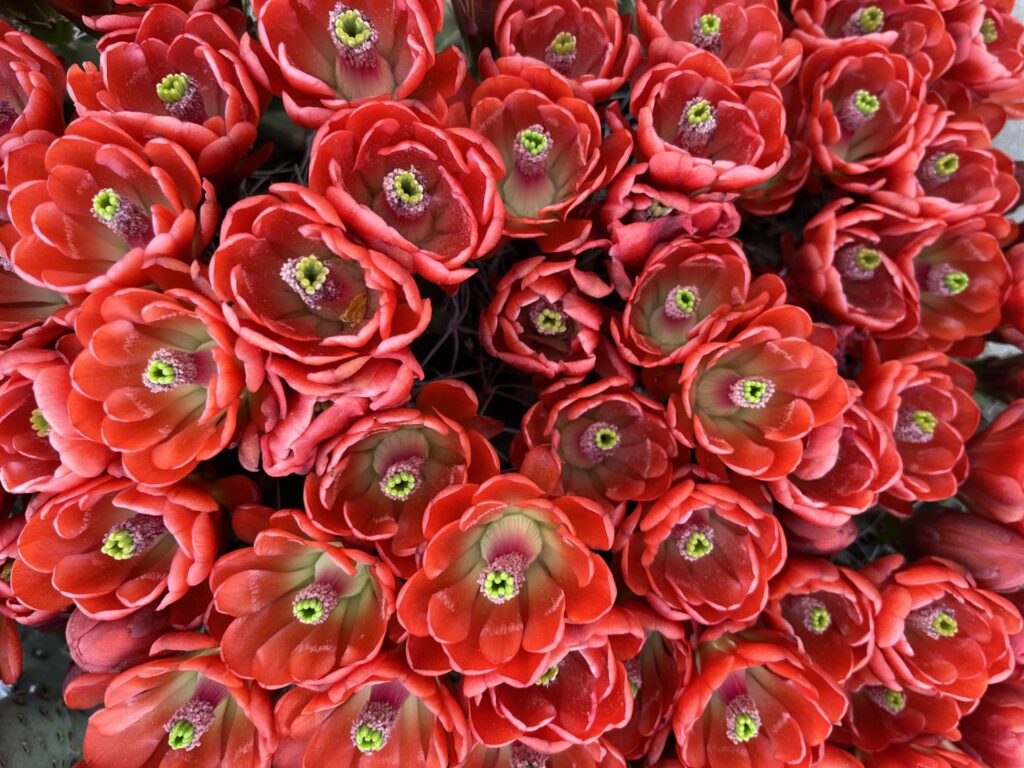What do we love, & what will we give up?

On Sunday afternoon, I strolled with a friend along a loop we love in the Manzanos. It’s a trail we’ve walked together countless times, and along the way, Julie Ann and I chat about our lives while witnessing the passing of seasons and shifts in the landscape.
Because the trail is just a wisp, we have to pay close attention, and often, it’s our memories that guide us. We veer at the spot where she once noticed a cool hummingbird, and we turn back at The Round Tree, a towering ponderosa that has lost a few big branches since she named it. Along the way, we bend to look at each wildflower, stop to decipher scat, and praise each giant alligator juniper.
Even as our lives change, we repeat the same trail recollections, always. Here’s where she saw a bear and cubs, there’s where we saw turkey tracks in the snow a few winters ago. I always listen for the quork and croak of ravens just before descending a rocky little hill where the birds have nested for far longer than we’ve been walking here. She always knows exactly where to look for blooming hedgehog cactus.
This landscape is an important part of our friendship, and the changes we witness are a part of who we are. This spring, it’s drier than I would have hoped. It’s still early, but the wildflowers that have bloomed seem small. And the forest feels crunchy.
Human-caused climate change in the arid Southwest means it’s warmer and drier than it used to be, and the impacts of climate change are everywhere. But that doesn’t mean we stop being in love with our forests, rivers, and mountains, whether our families have lived here for generations, or we have been walking a loop for a decade. I’m more certain of this than ever. And on Our Land, we’re in the throes of working on a show about loving our changing landscapes.
In the coming weeks, I’ll be asking questions, here and on social media, about the places you love and how you’ve seen them change. I can’t wait to hear what you all have to say.
Some of the news around New Mexico and the Southwest:
• “The long path of plutonium: A new map charts contamination at thousands of sites, miles from Los Alamos National Laboratory” (Alicia Inez Guzmán, Searchlight New Mexico)
• “NM fire survivors raise concerns about smoke damage payments” (Patrick Lohmann, Source NM)
• “Camino Real Regional Utility Authority asks people to cut all outdoor water use due to shortage” (Danielle Prokop, Source NM)
• “Texas Companies Eye Pecos River Watershed for Oilfield Wastewater” (Martha Pskowski and Dylan Baddour, Inside Climate News)
• “BP Was Warned Gas-Driven Climate Change Could Cause ‘Unprecedented Famine’” (Geoff Dembicki, DeSmog)
• “Two Mexican gray wolves are released in southern Arizona’s Sky Islands. Why that matters” (Hayleigh Evans, The Arizona Republic)
• “Gov. announces new Cabinet secretary of Energy, Minerals and Natural Resources” (Gabrielle Porter, Santa Fe New Mexican)
• “Comments sought on Rio Grande del Norte National Monument Plan” (Staff Report, Taos News)
• “Out of the Picture: A groundbreaking photography exhibition illuminates the impact of federal policies on Diné life” (Julia Goldberg, Santa Fe Reporter)
• “Problems with Glen Canyon Dam could jeopardize water flowing to Western states” (Kyle Dunphey, Utah News Dispatch via Source NM)
• “A rare dose of hope for the Colorado River as new study says future may be wetter” (Alex Hager, KUNC)
• “Timeline slips for huge Albuquerque solar project” (Alice Fordham, KUNM)
• “Officials urge caution as Northern New Mexico enters fire season” (Liam Easley, Taos News)
Speaking of fire season…I don’t normally link to things like this, but on the REI blog, there’s an essay from Ryan Wichelns, “Maybe It’s Time We Gave Up the Campfire.” I agree with the writer that “campers are the first line of defense, and are responsible for making decisions based on the microclimate they find themselves in.”
So, sure, I love sitting around a fire; I even have a firepit in my backyard. But there’s almost no practical reason to have an open fire while camping, especially if you’re backpacking in remote places and have carried in a small camp stove for boiling water and cooking.
Lastly, in March, New Mexico released a State Climate Adaptation and Resilience Plan. On the state’s website, you can read more and register for community conversations across the state in May and June.
P.S. If a friend forwarded you this message, sign up here to receive the newsletter yourself. You can also read recent newsletters online. And if you miss us throughout the week, follow Our Land on Instagram.


